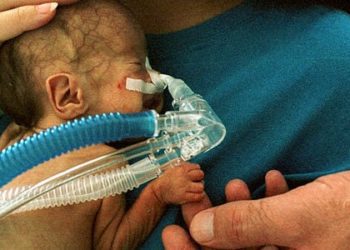Less than half of mothers place sleeping infants supine
1. Fewer than 50% of mothers surveyed both intended to and actually did exclusively choose the supine position for their sleeping infants.
2. Only slightly over half of mothers reported getting advice from their doctors that was consistent with that from the American Academy of Pediatrics (AAP) regarding sleeping position.
Evidence Level: 2 (Good)
Study Rundown: For more than one decade, the AAP has recommended that infants only be placed in a supine position to sleep. However, sudden infant death syndrome (SIDS) continues to be the number one cause of death among post-neonatal infants. Authors of this study surveyed mothers of infants regarding sleeping position practices they intended to follow versus what they actually practiced, as well as factors influencing their decisions. Results showed that in actual practice, a little over half of mothers indicated that they intended to use the supine sleeping position, while a little over 40% both intended to and were actually adherent to the AAP recommendations at all times. Slightly more than half of mothers surveyed received advice from a health care provider that was consistent with the AAP guidelines for sleeping position. White mothers were more likely than both Hispanic and non-Hispanic African American mothers to intend to place their infants prone while sleeping. Responses in this survey are limited by self-report bias. Nonetheless, these findings suggest that improving physician counseling practices and parental education regarding recommended sleeping practices may improve both intentions and actual practices.
Click to read the study, published today in Pediatrics
Relevant reading: SIDS and other sleep related infant deaths: evidence base for 2016 updated recommendations for a safe infant sleeping environment.
In-depth [prospective cohort]: Study investigators surveyed 3297 mothers (25% Hispanic, 25% non-Hispanic African American) with infants aged 2 to 6 months from 32 hospitals across the United States regarding their intended practices over the next 2 weeks and their actual practices over the past 2 weeks. To illicit factors related to maternal decisions, surveys also included questions about their attitudes, perceived control, and subjective social norms regarding infant sleeping position. Results showed that 57.6% of mothers intended to put their infants in the supine position while 43.7% of those who intended to do so actually did. 14.9% of mothers reported they intended to have their infants sleep prone at least some of the time. White mothers were more likely to intend to use the prone position than both Hispanic and non-Hispanic African American mothers (aOR = 2.5, 95% CI 1.57-3.85 vs. aOR = 1.5, 95% CI 0.58-3.30 and aOR = 1.5, 95% CI 0.80-2.65, respectively). Mothers who completed high school were more likely to intend to use the supine position compared to non-graduates (aOR = 2.1, 95% CI 1.16-3.73). Mothers who thought the prone position would be healthy, pleasant, or safer for their infant were much more likely to use that position (aOR = 130, 95% CI 7.18-236). Those who received advice consistent with the AAP guidelines were more likely to choose the prone position than those who did not (aOR = 0.6, 95% 0.39-0.93 vs. aOR = 2.6, 95% CI 1.52-4.47, respectively).
Image: CC
©2017 2 Minute Medicine, Inc. All rights reserved. No works may be reproduced without expressed written consent from 2 Minute Medicine, Inc. Inquire about licensing here. No article should be construed as medical advice and is not intended as such by the authors or by 2 Minute Medicine, Inc.






